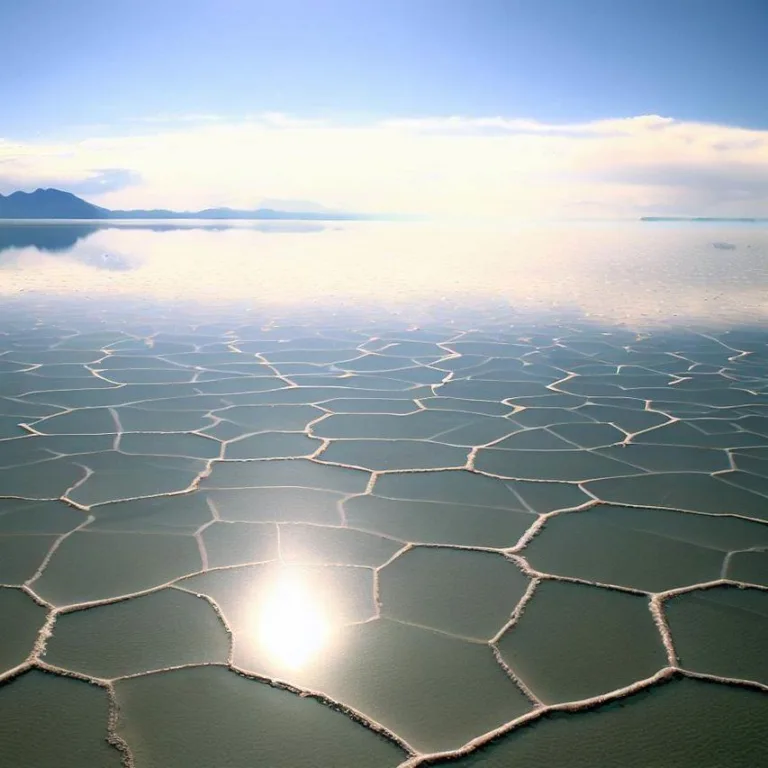Welcome to the otherworldly realm of Salar de Uyuni, a mesmerizing natural wonder that beckons travelers with its breathtaking beauty and surreal landscapes. Nestled in the heart of Bolivia, Salar de Uyuni is the world’s largest salt flat, spanning over an astonishing expanse of more than 10,000 square kilometers. The sight of this ethereal landscape is nothing short of magical, making it a must-visit destination for adventurers, photographers, and curious souls alike.
Formation and geographic marvel
The story of Salar de Uyuni’s formation is a geological marvel that dates back thousands of years. This awe-inspiring salt flat was born from the remnants of prehistoric lakes that once covered this region. Over time, the lakes dried up, leaving behind a vast expanse of salt and minerals. The result is a pristine, blinding-white landscape that seems to stretch endlessly towards the horizon.
Unreal mirror effect
One of the most iconic features of Salar de Uyuni is the mesmerizing mirror effect that occurs during the rainy season. When a thin layer of water covers the salt flat, it creates a mirror-like surface that perfectly reflects the sky above. This natural phenomenon turns the landscape into a surreal dreamscape, blurring the lines between earth and sky.
Island of incahuasi
Nestled within this sea of salt lies the enchanting Incahuasi Island. This rocky oasis is a haven of life amidst the salt flat, adorned with giant cacti that stand like sentinels against the stark backdrop. Exploring the island’s unique flora and taking in panoramic views of the surrounding expanse is an experience that remains etched in memory.
Stargazer’s paradise
When night falls over Salar de Uyuni, the salt flat transforms into a stargazer’s paradise. The absence of light pollution coupled with the high altitude creates a canvas of stars that leaves onlookers spellbound. Camping under the vast starry sky is an unforgettable experience, connecting travelers with the universe in a profound way.
Preserving the beauty
While Salar de Uyuni is a magnet for tourism, efforts are being made to ensure its preservation for future generations. Sustainable tourism practices and responsible exploration are key to maintaining the fragile ecosystem of this extraordinary destination. Travelers are encouraged to tread lightly, respecting the natural wonder that is Salar de Uyuni.
Frequently Asked Questions (FAQs)
What is the best time to visit Salar de Uyuni?
The best time to visit Salar de Uyuni is during the rainy season, from November to April. This is when the salt flat’s mirror effect is most pronounced, creating a surreal and captivating landscape.
How do I reach Salar de Uyuni?
You can reach Salar de Uyuni by flying to Uyuni’s Joya Andina Airport or by taking a bus or train from major cities like La Paz. Guided tours are a popular way to explore the salt flat and its surroundings.
Can I spend the night on the salt flat?
Yes, there are accommodations available on the salt flat, including unique salt hotels. Camping is also a popular option for those looking to immerse themselves in the natural beauty and stargazing opportunities.
Are there any safety precautions to consider?
While Salar de Uyuni is a mesmerizing destination, it’s important to be cautious while exploring. The salt crust can be hard to navigate, and weather conditions can change quickly. It’s advisable to go with a reputable tour company and heed their guidance.
In conclusion,
Salar de Uyuni stands as a testament to the marvels of nature, a place where the boundaries between reality and fantasy blur. Its surreal landscapes, unique geological formations, and captivating mirror effect make it a true gem of our world. A journey to Salar de Uyuni is not just a trip; it’s a transformational experience that etches memories that last a lifetime.
Viz také:






